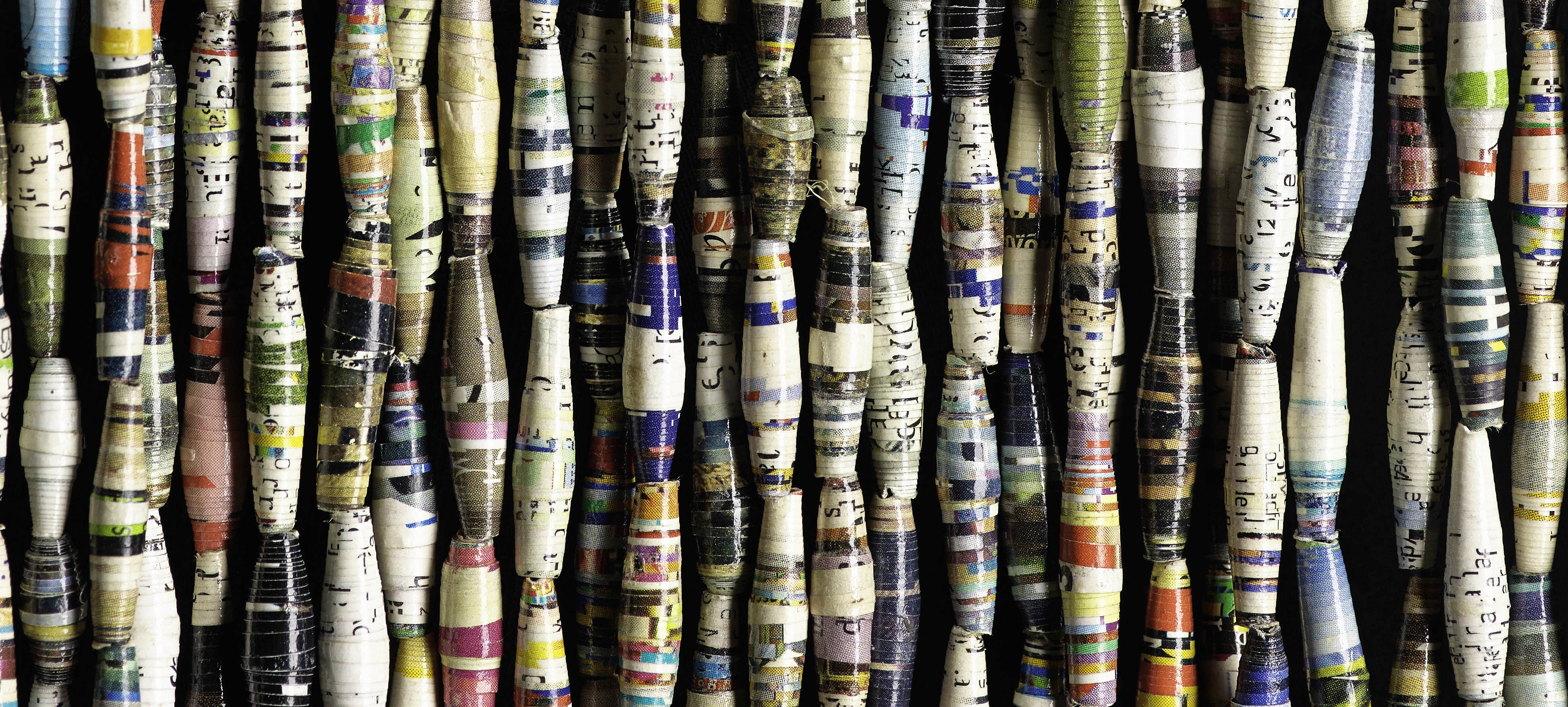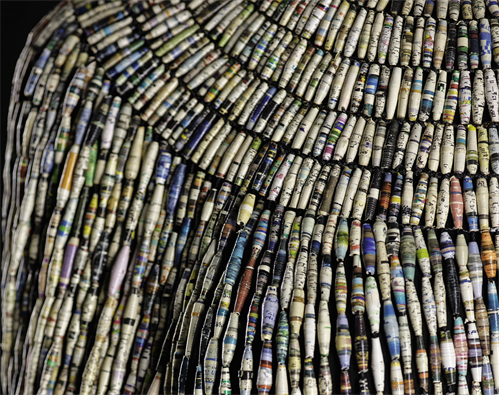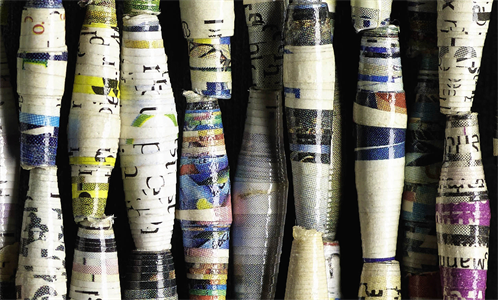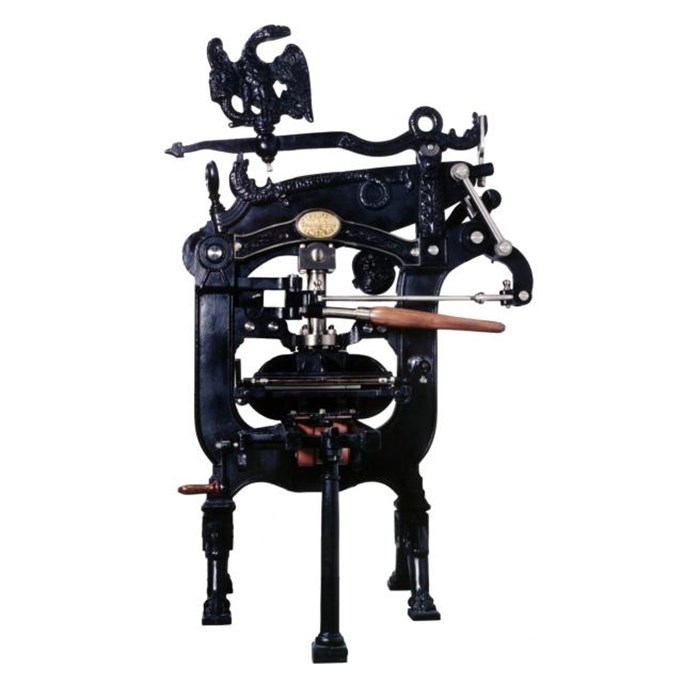Key in a search term below to search our website.
Key in a search term below to search our website.

Colourful and intriguing, this bead-work shawl by contemporary Ugandan artist, Sanaa Gateja, transforms waste paper into a statement piece of art and fashion.
Date
2014
Made by
Sanaa Gateja
Made from
Recycled paper
Made in
Uganda
Museum reference
Did you know?
The earliest known bead in Africa dates back to prehistoric times and was made from ostrich eggshells.
This bead-work piece was designed by Uganda artist, Sanaa Gateja. He describes it as a shawl. From the beaded collar-like yoke, thousands more multi-coloured beads hang in strands to form the body of the shawl. Each bead is hand-rolled from recycled paper, a technique introduced to Ugandan women by the artist in 1990. Since then the technique of paper bead-work has spread to other East African countries.

Above: A close up of the construction of the shawl. Though the collar-like yoke and the strands of beads look like two separate parts, they are in fact one continuous piece.
To create the beads, waste printed paper is salvaged, cut into strips, and rolled into tubular beads which are then coated with a clear varnish to strengthen and protect. The finished beads are incorporated into Sanaa Gateja's costumes, accessories, and other artistic projects at his Kwetu Studio in Uganda's capital city Kampala.
Recycling is a distinct feature in African art and contemporary artists often transform man-made waste products into abstract and intricate works of art. Discarded aluminum can become elaborate wall hangings such as in Ghanaian artist El Anatsui's work and scrapped car parts can turn into abstract sculptures like with Benin-born artist Calixte Dakpogan's pieces. Sanaa Gateja works in the same vein by employing local, recycled, materials to create his shawls.

Above: A close up of the beads of Sanaa Gateja's shawl. Look closely at the rolled up strips and you will see familiar letters!
His bead-work shawl combines traditional African recycling and printed paper. All the beads are created from recycled school catalogues. Each is unique and colourful with the writing of the catalogues still visible on many of them. It is the recycled paper material of the beads and the writing on them that Sanaa Gateja feels artistically fuses Uganda and Scotland.
Sanaa Gateja's bead-work shawl entered the African collection of National Museums Scotland as part of a collaborative project between the artist, Deveron Arts in Huntly, Aberdeenshire, and curator of the African collections at National Museums Scotland, Sarah Worden. The project explored the roots of the Scottish missionary and engineer, Alexander Murdoch Mackay, who introduced the printing press to Uganda.

Above: A mid-19th century Columbian printing press located in the National Museum of Scotland's Grand Gallery.
Alexander Mackay is less well-known in his home country than in Uganda. He was born in Aberdeenshire in 1849 and received his engineering degree in Germany before travelling to Uganda as a missionary in 1878. In order to achieve his missionary goals, Mackay brought with him the printing press, subsequently introducing this technology to the country, and became the first European to write down the local Luganda language. He translated the St Matthew's Gospel from English and mass-produced the text using the printing press. This technology would make Sanaa Gateja's 21st century shawl possible and create artistic as well as historic ties between Uganda and Scotland.